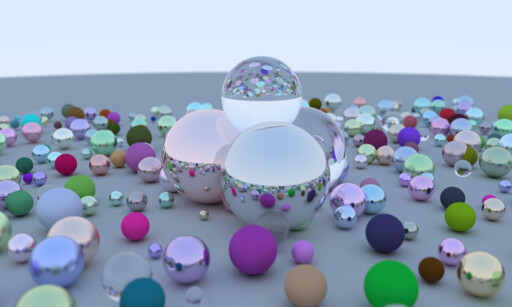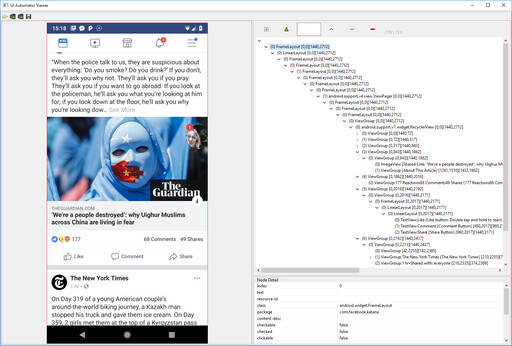Few things in recent memory have resonated with me as much as Meghan Daum’s outstanding Medium article on the subject of the “intellectual dark web” and the ongoing erosion of nuance in today’s political climate, minus the heartbreaking divorce story.
Three years ago, I would have considered myself mostly apolitical. We had our first Black president and were well on our way to having our first female president. The economy had recovered from the 2008 recession. Everything was going well, without me needing to take any notice of political matters. And then something happened in 2016 that kick-started my interest in politics, as it did for so many other people.
Prior to election day, 2016, I drove around the suburbs of Pittsburgh, Pennsylvania, and was noticing a curiously large number of Trump signs on people’s front yards. Listening to the news, I would hear the broadcasters pleading with young people to “get out and vote,” and all I kept thinking was, “careful what you wish for.”
And then it happened: half of the American people (nearly half, that is) voted for a megalomaniacal, egotistical, misogynistic, late-night-tweeting, barely-coherent reality TV star, just for the purpose of rubbing in how much they hated his opponent, Hillary Clinton.
Since then, I’ve endeavored on a quest to understand the Trump voter, or more precisely to understand what enabled Trump, what gave birth to the idea of him as our president. This quest is still in its infancy, but there is one thing that stands out as a major contributor to our current state of affairs: our conversations have gotten more and more polarized, and any hint of nuance has been virtually extinguished.
The idea of “disagreement” on political matters has shifted from a chance for a healthy debate to instant knee-jerk responses of insult and offense. The problem exists on the left and the right. If you speak to a right-winger and broach the idea of socializing healthcare, you’re automatically an SJW. And if you speak to a left-winger and broach the idea of putting limits on immigration, you’re automatically a racist.
Much has been written on the rise of “victimhood culture,” which is what the Right perceives is happening to the Left. They believe the Left has become obsessed with identity politics, with minority groups competing for who is the most oppressed, researching where these groups intersect and thereby carving out even more oppressed minorities. College campuses have become “safe spaces” that stifle free expression and protect students from radical or dangerous ideas, they say, and many of today’s professors and academics are proudly Marxist and long for the next proletarian utopia.
Conversely, as a response, the Left have developed a tendency to lump together any kind of dissenting opinions into the same category, react to them with the same magnitude of revulsion, and even to misrepresent and inflate statements made by centrists or center-leftists, and brand them as “alt-right-adjacent,” further alienating people who would otherwise be their allies. They are convinced that any deviation from a perfect liberal progressive narrative will necessarily lead to white nationalism, misogyny, homophobia, trans-phobia, and fascism.
The reason for all of this polarization is, to me, plain as day: Twitter. Here we have a social network that literally forces us to condense our most deeply-held beliefs into a single sentence, into a slogan, or a hashtag. It is, of course, impossible to do this without grossly oversimplifying our beliefs, or without turning them into statements that sound profound but are actually meaningless (or turning them into “deepities,” as Dan Dennett calls them).
When we communicate with each other using nothing but slogans, what do you think will happen? It’s much easier to argue against a slogan using an equal-and-opposite slogan. It’s also much easier to take offense when someone rejects your slogan because of the beliefs you’ve poured into it. Twitter then compounds the problem by rewarding this behavior in the form of encouraging “likes” and “retweets,” giving rise to a competition of one-liners which can only be won by making your slogans all the more extreme. Is it any wonder, then, that Twitter is Donald Trump’s favorite platform for conveying his messages? Is it any wonder that Twitter creates bubbles and echo chambers where like-minded individuals egg each other on, often anonymously, to behave more and more extremely? And is it any wonder that Twitter can be so easily manipulated my malicious external forces who might want to influence our democratic process?
There is, however, a glimmer of hope. The last couple of years have seen the growing popularity of long-form discussions and debates in the form of podcasts, YouTube videos, and even live events. Joe Rogan’s podcast is one of the spearheads of this movement. Despite each episode being two to three hours long, it receives over 100 million downloads per month. To me, this level of popularity indicates a real craving for these kinds of discussions among the general public. People are getting tired of being angry at each other, and are demonstrating a willingness to listen to the whole story, a need to understand their opponents’ ideas before drawing conclusions.
On his podcast, Joe Rogan doesn’t prepare any specific questions or impose any kind of structure; he simply invites his guest to shoot the shit for two hours, and let the conversation or debate come about naturally. His interviewees come from all walks of life: MMA fighters, sports players, actors, musicians, writers, businesspeople, scientists, and more pertinently to this discussion, political commentators (in which all of the previous professions can also take part).
He has interviewed most of the major figures of the “intellectual dark web,” such as Jordan Peterson, Sam Harris, Bret and Eric Weinstein, Michael Shermer, etc. Many of these public figures have their own podcasts and YouTube channels. And many are also active on the live debate circuit – as Harris likes to point out, by doing nothing more than putting a date on a calendar, he can witness thousands of people fill the theatre hall to watch him debate his opponent.
It’s these intellectuals that are considered by some leftists to be gateway drugs to the alt-right, since some of their statements, crossing certain political trip-wires, can be seized upon to demonstrate a superficial sympathy with the alt-right. However, anyone who takes the time to listen to the full conversation, instead of a clickbait sound bite or an out-of-context quote (on Twitter, of course), will understand that this cannot be further from the truth. Saying that these people are gateway drugs to the alt-right is like saying that mountain climbing is a gateway drug to jumping off a cliff. By the way, “intellectual dark web” is really a silly term for it, since it implies a well-defined club with which these people identify, or even some kind of groupthink among the people in it, which also cannot be further from the truth. The opinions of these intellectuals are as diverse as they come.
More importantly, however, Joe Rogan often interviews guests with whom he doesn’t agree (and neither do I). This includes provocateurs and opportunists like Milo Yiannopoulos and Candace Owens, as well as prominent farther-right figures like Ben Shapiro, Gavin McInnes, and Steven Crowder. At points when they disagree blatantly enough, or when they are factually incorrect, Rogan calls them out. But for the most part, he patiently lets them lay out their views and make all their arguments to support them. And from this style of conversation, as vehemently as I might disagree with them, I can take away a few important points: a) they are all human beings with strengths and weaknesses, b) they are not wrong about everything, c) at the points where they are wrong, I can analyze exactly why they’re wrong, what led them to these conclusions and what I can do to avoid those conclusions myself, and d) I can disagree with them without considering them irredeemable. But that’s merely my takeaway from these discussions. Yours may be different, and that’s OK – let’s talk about it.
I am now virtually convinced that long-form podcasts, which are springing up all the time, will be the antidote to the abject cesspool of vitriol that Twitter has become. In the coming months and years, I hope for a mass exodus of users from Twitter to more meaningful, unabridged, unedited conversations, where people will truly understand the nuances of the issues that impact our society, and make more informed decisions based on knowledge and facts instead of emotionally charged placards in the form of tweets. This can only be a benefit to our democracy, our civilization, and our planet.







